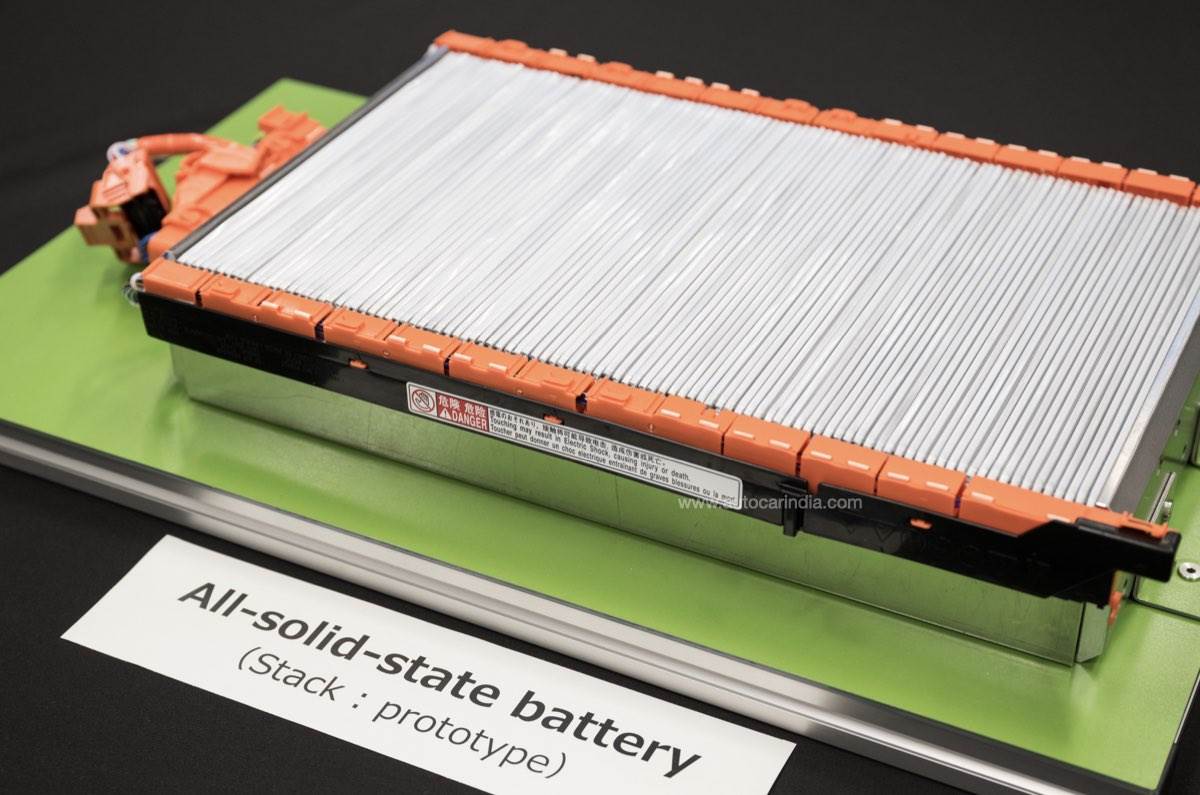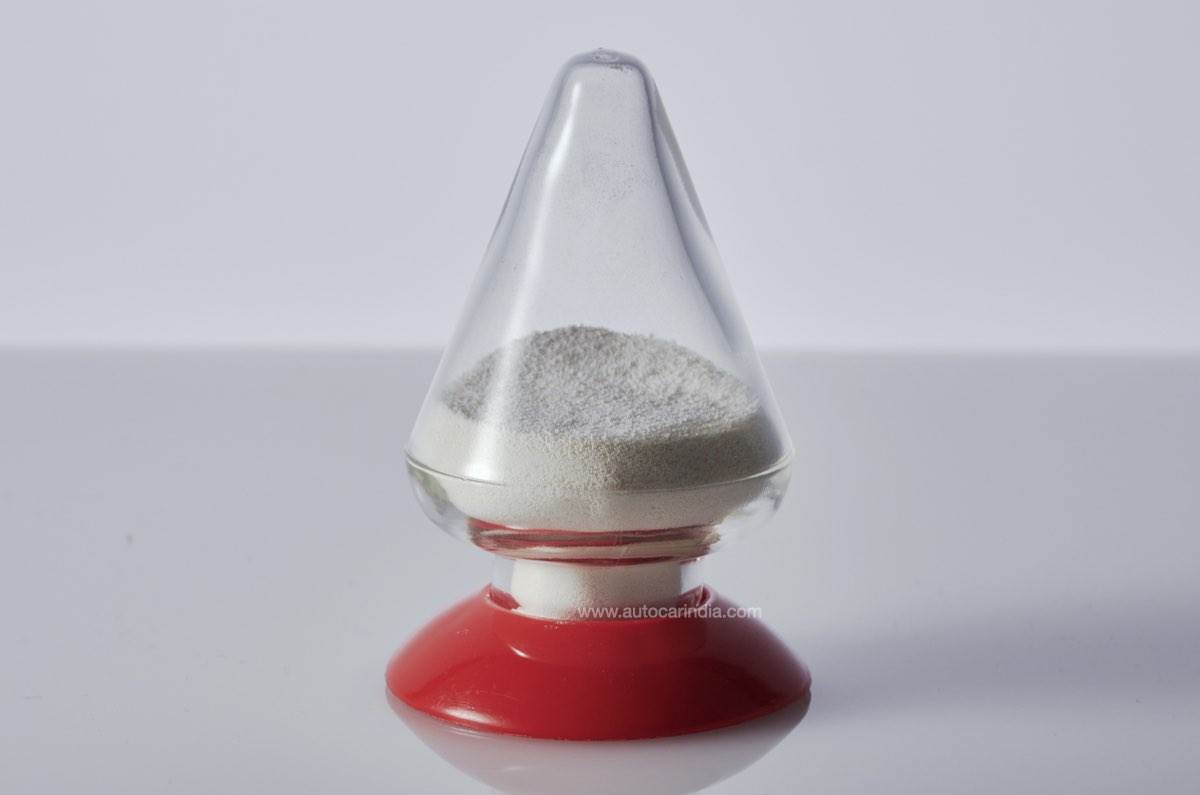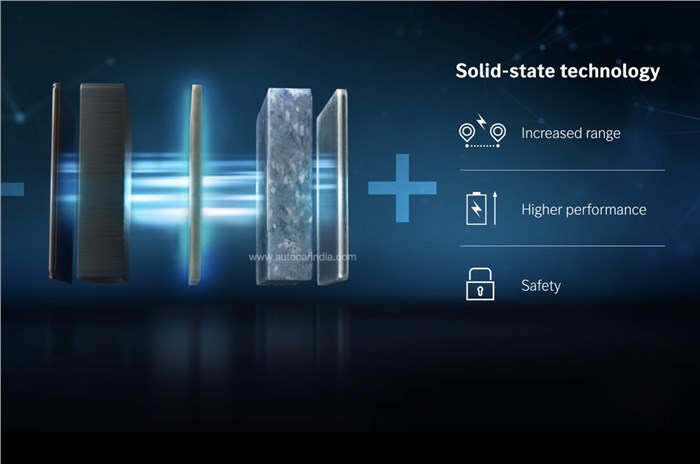Solid State batteries are the future, and here’s why the tech has the potential to be a game changer.
If electric cars have to deliver the future we all expect them to, there will need to be several advances made in the coming years. The first, of course, involves the greening of battery components; specifically the mining and production of Lithium, which releases around half a dozen tonnes of CO2. Up next is safety – thermal runaway – that’s still a huge problem in hot countries like ours. And finally there’s performance, packaging and cost, advances we all expect electric cars to make in the coming years.
- EVs with Solid state batteries could have up to 1,400km range
- Lexus FT-Se could come with an SSB when launched
- Toyota holds maximum SSB patents
What’s fascinating is that all three issues can potentially be resolved, partially at least, if solid state battery (SSB) technology rolls over the horizon in the coming years. Expected to be mass manufactured and adopted somewhere between 2027 and the end of the decade, SSBs are both currently leaden with potential, and at the same time fraught with technological hurdles.

Toyota engineers say solid state batteries will go from 150mm for normal Lithium ion battries to around 100mm for solid state units, at least initially.
Solid state batteries: what’s different?
But what exactly is an SSB? It’s actually quite simple. Lithium-ion batteries we use in cars use a liquid electrolyte to help transfer electrons from one side of the battery to the other. Remember electrolysis? Yeah, something like that. And since the electrolyte is in liquid form, this makes the battery large, heavy and sensitive to thermal runaway. This is why, in comparison to a conventional lithium-ion battery, SSB technology has the potential to increase energy density, reduce charge time and make it more stable when it comes to thermal runaway.
Solid state batteries, however, are expensive, and currently cost up to three times more pound for pound. But, they make up for it as they’re capable of holding three times the charge and delivering thrice the range. How far will EVs with solid state batteries be able to go? Toyota says that by 2027, its EVs will be able to travel around 1,400km on a single charge. And unlike today – because of better thermal management – solid state batteries won’t have to stick to the 80 percent limit when it comes to DC fast charging.

Solid state batteries are currently suffering from the problem of micro cracks, and these are proving to be difficult to overcome in the short term.
Solid state batteries: hurdles and feasibility
So much for the potential. However, myriad hurdles exist. For one, several battery makers around the world are struggling to overcome the problems of cracks forming in the solid separator. Some battery makers are suffering lower than expected energy densities (measured in Wh/Kg), and then to make these new batteries viable, costs need to be reduced significantly. Also part of the equation are ever-improving conventional Lithium-ion batteries.
Still, progress has been made – if slowly – especially in Japan, Korea and China where multiple companies are currently moving into the production feasibility phase. Also on the cards, and often touted as a solution, are sodium-ion batteries. This type could remove the difficult to mine Lithium from the equation, however, they don’t currently have the density required to be used in cars, and are only thought to be suitable for use in static applications where weight and size aren’t issues.
Another way we could see faster adoption of solid state tech is if companies like Toyota introduce them in hybrids first. This would potentially resolve some of the problems, and once the technology is more widespread, would serve only to accelerate the production and use of large capacity units.

Lithium will continue to be a much sought after resource. Other types of battries will come eventually, but they are a long way off, especially for cars.
Solid state batteries: advantages
Apart from its fundamental strengths, solid state batteries will also offer advances in other areas, many not conventionally associated with the battery. The most important one would probably be that SSBs are much flatter in general, which means they will be great for packaging. How much of a reduction in size are we talking about? Toyota says the size will go down from roughly 150mm today to approximately 100mm eventually, and that’s huge in packaging terms. So SSBs will allow engineers to build lower slung, more aerodynamically efficient cars and with their lighter weight, it would also make the design of two-door sportscars more feasible.
Most sporting EVs today have four doors for a reason, and that reason, of course, is the size of the battery and its weight. You can bet your last Yen that Lexus’ sporty FT-Se, shown at the Tokyo Salon earlier this year, will use an SSB. How else can it achieve that roofline?
Solid state batteries: which companies?
So who’s ahead in the race to bring solid state batteries to the market? Surprisingly, it’s Toyota, as it holds the most patents on the tech. What’s just as important is that Toyota has recently even tied up with Idemitsu for the manufacture of SSBs. So is Toyota’s solid state battery all but ready? Panasonic, Samsung and LG, the other big Japanese and Korean battery makers are also close on its heels, with some holding onto advantages in specific areas.
Also equally important are Chinese battery giants CATL and BYD , who have been ‘showing’ plenty of progress in recent years, especially in their projections. Don’t write off these state sponsored world leaders in battery production, remember that they can work their way around most patents anyway.
Solid state batteries will be game changers when they arrive. Their compact proportions, high performance and ability to blend into any design will fundamentally change how we engineer and manufacture cars. Imagine, when they arrive on the scene en masse, born EV platforms will have to evolve or be rendered outdated. Keep your eye on this potentially disruptive emerging technology, it has the potential to fundamentally change the game.
Also see:
Volkswagen entry level EV SUV to debut in 2026
Gensol EV with a claimed 200km range teased
Range Rover EV teased; waiting list opens
Tata Nexon EV Max, Prime get up to Rs 2.60 lakh year-end discounts

























